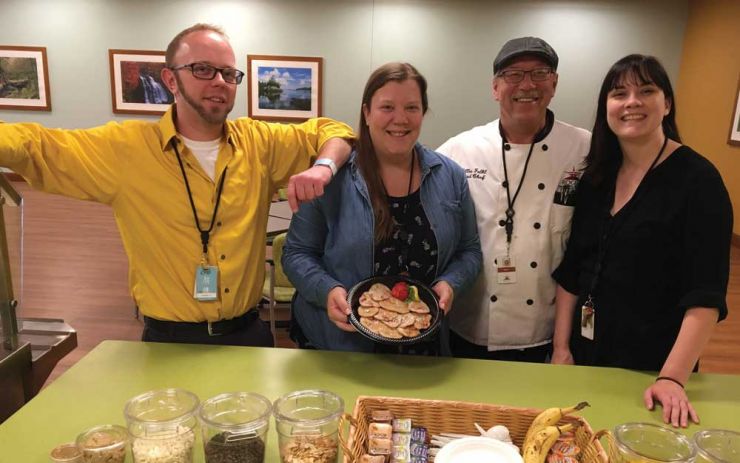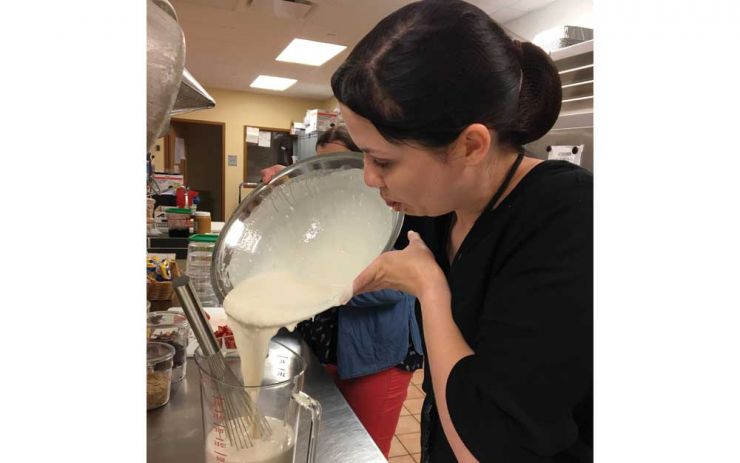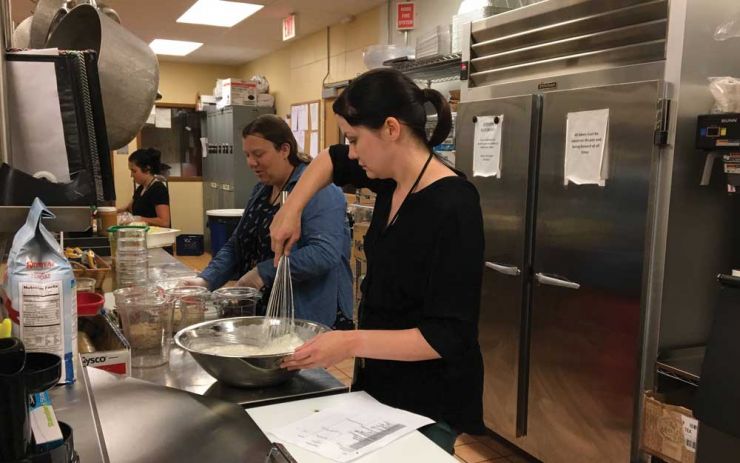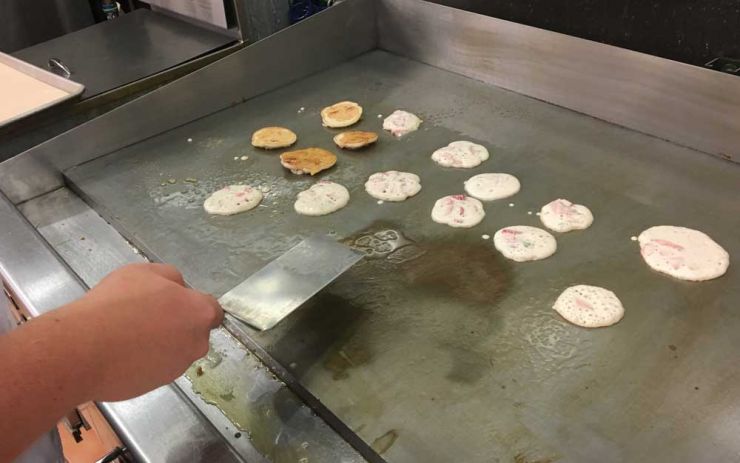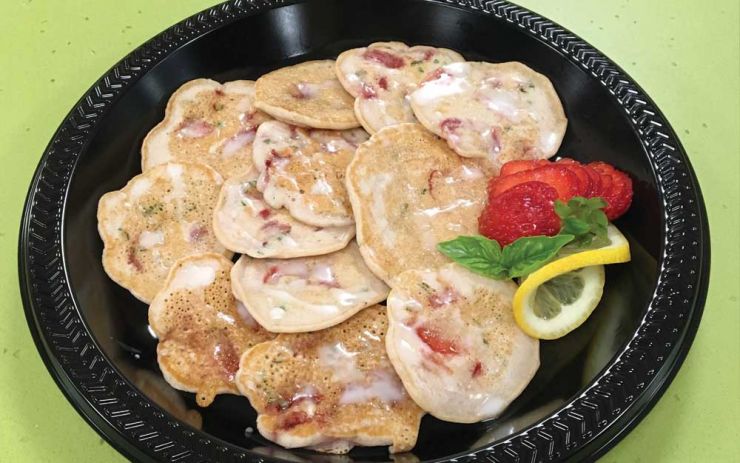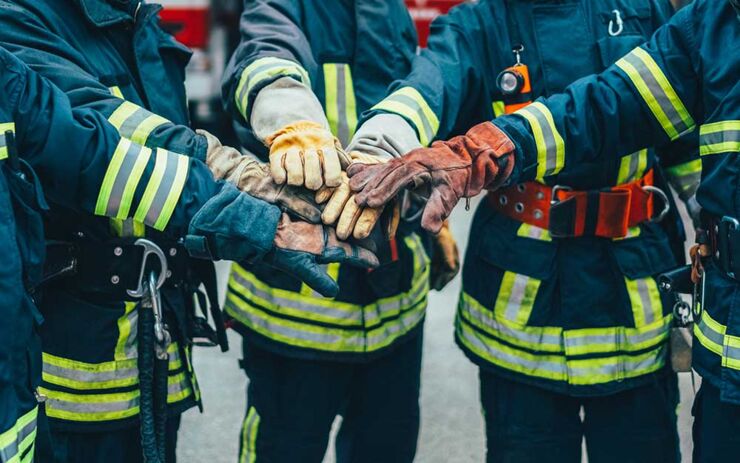
Culinary art therapy program uses innovative approach
09/13/17 01:56:pmCulinary Art Therapy program a big success in Brown Deer
Josh Larson joined Rogers Memorial Hospital–Brown Deer as an experiential therapist with a focus on art therapy since the hospital opened its doors in April 2015.
His previous work had exposed him to many people and different therapeutic modalities, and he observed how some people were reluctant to participate in therapy sessions involving fine arts. “They were either skeptical of the benefits of art therapy, or their artistic ability,” Josh explains.
Shortly after arriving at Rogers, Josh began to consider new ways to integrate food preparation into experiential therapy. He collaborated with Ryan Geller, manager of dietary and nutritional services; Ellen Smith and Julie Rosbeck, registered dietitians; and Willie Felkl, chef. Together they piloted a culinary art therapy (CAT) program.
Dietitians play a large role in the CAT program. Ellen Smith, RT at Rogers- Brown Deer, shares, “We use all kinds of ingredients in our groups, anything from chocolate and bacon to fresh herbs and tomatoes grown in our gardens. CAT groups give us an opportunity as dietitians to teach patients about moderation, balance, and having a healthy relationship with food,” she adds.
Culinary art therapy uses food as its artistic media. As expected, the program is attracting many people. “Eating is essential to everyday life,” Josh says. “Participants are often more open to applying metaphors involving food and cooking to their everyday lives.”
Like other experiential therapies, CAT is designed to help people build self-esteem, practice moderation, and solve problems by learning how to collaborate, communicate and tolerate stress. To encourage self-sufficiency and ensure patients take an active role in their treatment, the program does not use recipes.
The program is currently offered to participants twice a month, and will be offered weekly to the child and adolescent units after programming changes in the fall. The cuisine they create is shared with participants in the group and their treatment team upon return to the units.
An added benefit? Because the program fosters group cohesion, many who participate are more likely to attend other experiential therapies.
The program was officially incorporated into treatment programming for child, adolescent and adult mental health units last October. So far the program is only available in Brown Deer’s inpatient hospital, but Josh is developing a model to help others implement culinary art therapy into various levels of care including the adolescent dual diagnosis partial hospital program in Brown Deer and in Rogers’ other inpatient hospitals.
Josh plans to publish this program model as his thesis for Mount Mary’s art therapy graduate program in December.



